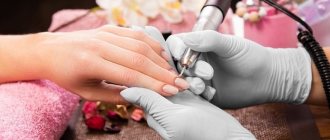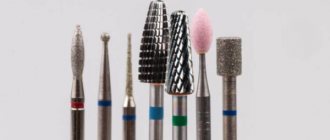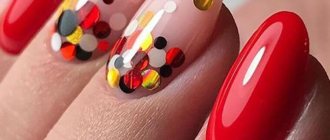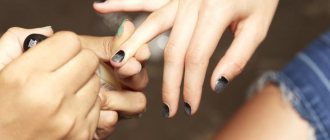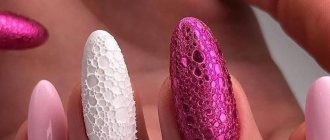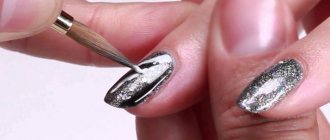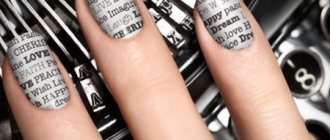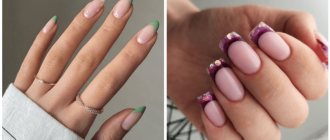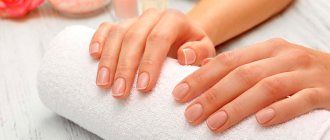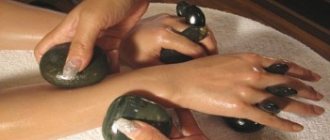Professional devices designed for treating nails, cuticles and side ridges have become an indispensable attribute of most nail salons. Appreciating the ease of use and excellent results, many fashionistas purchase devices to be able to do a beautiful manicure at home. When choosing a device, you must remember that it requires manicure cutters.
Some manufacturers offer milling cutters with several attachments included. However, often, it does not satisfy all the needs of the owner. In addition, they wear out with use and require replacement. Therefore, women have to independently purchase new attachments, collecting their own tools for work. To make the right choice from the presented assortment, you need to know exactly the purpose of different types of cutters, their differences and characteristics. Only if you use the right tool will your manicure be perfect.
Why do manicure cutters have different shapes?
Initially, these miniature instruments were used by dentists to drill and polish teeth and remove tartar. It is unknown who first thought of using a dental drill to remove old varnish and dead skin, but today this method has found a lot of admirers. And the industry immediately responded to demand by starting to produce small but powerful desktop manicure machines and cutter attachments for them.
Today, a huge number of cutter attachments with a wide variety of shapes are manufactured. For an unprepared person taking his first steps in the field of nail design, this diversity can cause a sensory shock. In front of a display case filled with round, oblong, narrow, cylindrical products, it’s easy to get confused, buying what you don’t need and not paying attention to the truly necessary offers. It is worth dwelling on the purpose of the products in more detail.
In the process of processing nail plates, they perform two important functions:
- remove layers of old varnishes and coatings;
- tidy up the plate and surrounding skin.
View this post on Instagram
Posted by Unreel (@extremeofficial)
Shape: an important parameter
When choosing a nozzle to use on the device, its shape is important. Manicurists have a vibrant kaleidoscope of options available to them. Each of them is designed for a specific intermediate stage of a pedicure or manicure.
Ball
The spherical device is specifically designed to work with the cuticle. Sometimes the ball is required for local treatment of any nail defects. The spherical shape allows you to very delicately remove an unnecessary layer of skin or polish the plate.
The difficulty of the work lies in the fact that with too much effort you can make a cut. The master must control the degree of pressure throughout the entire procedure. It is also important to remember that you cannot remove gel polish with a ball.
Kidney-shaped
All three subspecies (lentil, willow and flame) are equally successful at removing cuticles. They can also be used to treat nails. The varnish is removed only by the lower part of the “bud”.
Cylinder
Cylindrical ones ensure very fast removal of old coating. This is possible due to the fact that the contact area between the nail plate and the instrument is quite large. The artificial turf can be easily removed, and the client will not have to wait long or tediously.
But this does not mean that the specialist will only use the cylinder. The side rollers are processed with other, thinner attachments. The cylinder has a second name - drum - due to its shape. It has an intense mechanical effect on the plate; you need to adapt to working with it. Not recommended for beginners.
Roller
Suitable for maintaining side rollers. They can also quickly and painlessly cut the cuticle. It is shaped like a cylinder with a rounded top. Cuts are avoided as the edges are rounded.
Cone
The master can choose several cone options: needle-shaped, rounded or truncated. The thin end lifts the cuticle. It also treats problem areas of the nail plate. The wide part is used to remove the gel polish.
Corn
This original shape can be found in carbide and ceramic samples. It is most convenient for removing old coating. It has an elongated shape. Its upper part tapers and is rounded. Multiple notches are visible across the entire surface. Visually, the model really resembles an ear of corn.
This is a good cutter for removing shellac. It works quickly, powerfully, but gently. Masters call it universal because it is also recommended for cleaning sinuses and removing cuticles.
What brands of manicure cutters are the most popular?
There are highly specialized attachments that are designed to perform one single action - non-functional.
- "Needle". The speaking narrow-elongated shape is suitable for lifting the cuticle and removing pterygium. You can use it to file your nails under the extended plates. Hold the tool parallel to the surface of the nail.
- The “cone” lifts and opens the cuticle. It is necessary to maintain an angle of 900.
- The “ball” cuts off burrs, dead skin of the cuticle and side ridges. May have different diameters.
- “Bullet” perfectly removes pterygium.
- “Corn” is used to remove old coatings, extended plates, and shape the nails along their length. Hold parallel to the nail.
- “Cylinder” is suitable for grinding off excess length of plates. Due to the sharp edges, extreme caution is required when handling.
- The “roller” (rounded cylinder) does an excellent job of cutting cuticles and dead skin from the rollers.
Also, companies offer universal cutters that can be used at several stages of work. They are called functional. Such attachments are the best option for both an experienced craftsman and a beginner, as they allow you to complete all processing without replacing cutters.
- "Flame". A universal tool in the master's arsenal. It has an elongated fan-shaped shape, different diameters. The cheeks are used to clean the cuticle, the nose is used to work with the sinuses, and the “belly” is intended for rollers. Hold at an angle of 450.
Types of attachments by function
At each stage of work, different cutters are used:
- Any cutter equipped with teeth is suitable for removing artificial material. For gel polish, the recesses should reach 1 mm, and nozzles for dense layers (gel and polygel) - up to 2 mm. Large threads leave grooves, after which you need to use buffs and files.
- Cone-shaped nozzles are suitable for processing glossy surfaces. They provide good contact with a large surface area.
- Diamond cutters are needed to work with sinuses and pterygium. They clean out debris well and lift the skin at the cuticle. There are galvanic, sintered monolithic tools with different abrasiveness. Their markings begin with a white notch.
The diagram shows the purpose of the attachments for the manicure machine.
Reversible cutters can be used by left-handed or right-handed people. Material removal will be smooth regardless of the direction of movement.
Gradation of manicure cutters by hardness with color marks
All products have standard color coding according to the degree of abrasiveness (hardness). How to distinguish them?
- Black and purple are the most embossed surfaces designed for removing artificial nails.
- Green – high hardness. This tool is used to remove keratinized corns and calluses on the feet, as well as varnish and decorative coatings from the toes.
- Blue – medium hard. It is used to clean calloused, damaged skin.
- Red is soft. Universal degree of abrasiveness, ideal for working with skin and plates, stripping pterygium. Products with two risks - increased softness.
- Yellow – super soft impact. Used for delicate, allergy-prone skin.
- White – ultra soft. They perform small, delicate work on nails and treat very delicate skin. They are used extremely rarely due to low productivity and narrow specialization.
Cleaning and processing of cutters
Simply rinsing the nozzles with water is not enough. After all, the surface of the cutter is uneven; it must be thoroughly cleaned of dirt and sawdust particles.
Cleaning steps:
- We disinfect the cutters with a special liquid cleaner for cleaning manicure instruments.
- Using a brush, we clean the tips with the same special solution.
- We rinse the instruments with running water, removing any remaining disinfectant from them.
- Place the nozzles on a napkin and leave them to dry.
What are manicure cutters made of?
Milling cutters differ in the raw materials used to manufacture them.
- Steel ones with diamond chips are needed for working with nails and skin. They are divided by abrasiveness, according to multi-colored stripes.
- Carbide steel ones do an excellent job with artificial nail plates and old layers of varnish.
- Super-strong ceramics with a complex composition have a hardness greater than steel. That is why such products are durable, their service life is four times longer than that of standard nozzles. In addition, they do not heat up when rotating, do not create vibration, and do not become clogged with removed material.
View this post on Instagram
Posted by Unreel (@extremeofficial)
- Corundum tips are hard enough to remove corns, calluses, and artificial materials.
- Disposable silicon carbide and sand caps are designed for pedicure. They remove calluses and rough skin.
- Products for grinding are made from rubber, silicone, suede. For a restorative effect when polishing, add a couple of drops of healing essential oil or cream.
TOP 5 attachments that a beginner must have
If you are just starting your acquaintance with hardware manicure and pedicure, purchase the basic five cutters, with which you can create the necessary shape and thoroughly process the nail and skin around it.
Diamond or metal corn with red notch
Use “corn” to remove the gel polish and treat the sides of the nail. The cutter has a rounded shape with a pronounced “belly” and a rounded tip. The nozzle does not heat up during use. It must be operated at 20-25 thousand rpm, selecting the FWD mode.
For beginners, it is recommended to buy 1 “Corn” with diamond coating and one carbide.
Flame with red notch
One of the main cutters that a novice master needs. With its help, the artificial layer is removed and the excess pterygium is cleaned. It should be used by turning on the device at a speed of 15-17 thousand revolutions. 10-15 cutters will be required.
FOR REFERENCE
Pterygium is a thin film that fits tightly to the nail plate, the lower layer of the cuticle.
"Ball" with a red notch
Use the “Ball” cutter to remove rough skin around the nail and cut off the cuticle). It should be used with caution, without pressing too hard on the nail, as it is very easy to get cut and ruin the natural nail.
The “Ball” cutter is used from the bottom up. The most optimal is 15-20 thousand revolutions.
Silicone cutters
Soft attachments are used for grinding and polishing the native nail. Use the cutter at the lowest speed, running several times from bottom to top of the nail. 3-5 nozzles are enough.
Differences between manicure cutters and pedicure cutters
The technology for caring for nails on hands and feet is no different. Therefore, the same types of nozzles are used for different stages of work. All the differences are in rougher nails and keratinized skin. Therefore, larger, rigid products with a pronounced relief are used.
Foot care also includes skin treatment. To do this, special attachments are used to remove keratinized, dead skin, clean cracks, as well as subsequent grinding and polishing of the delicate skin.
Safety cutters
Milling cutter attachments remain dangerous in 90% of cases if the basic rules of use are not followed. The manicure device is selected taking into account the purpose, as there are professional models and those created for home use.
Security aspects:
- tilt angle;
- pressure intensity;
- abrasiveness of the cutter;
- selecting the rotation speed of the rotating element in the handle.
Silicone carbide grinders are considered the safest. They are convenient for basic manipulations: cleaning rollers, pterygium and cuticles.
Another safe tool is a corundum stone. It has no notches, only ribs that cut off soft burrs at high speeds. If positioned incorrectly in relation to the nail, it may leave cuts.
Recommendations for cutters from experienced specialists
For professional nail care you will need the following set of attachments:
- "Flame", "Bullet" or "Cone" with diamonds and red mark, to lift cuticles and cleanse rollers;
- cut off the cuticle and dead skin from the sides using a “Ball” with diamond chips, medium or miniature;
- The pterygium is cleaned with a diamond “Cone”;
- the old coating is removed with ceramic “Corn”;
- if the nails are extended and trimming of the plates is required, then a carbide “Cylinder” is needed;
- Finish the job with sanding attachments.
Manicure machine
A machine for hardware manicure ( milling cutter ) is a special handle connected by a cord to a processor. Attachments, including cutters, are attached to the handle. The processor is responsible for rotating the attachments at the desired pace and direction.
The machines differ in design, power and maximum rotation speed of the nozzle.
For home use, devices with a speed range of no more than 10 thousand revolutions per minute are suitable, and masters in professional salons use equipment whose head rotates at a speed of up to 30-35 thousand revolutions per minute.
How to install cutters before a manicure procedure
Depending on the manufacturer and brand of router, there are three ways to clamp the attachment:
- automatic automatically fixes the inserted shank. Such a mechanism must always have either a cutter or a plug, otherwise it will be blocked. You won’t be able to deal with the blockage on your own - you’ll have to call a technician or go to a service center;
- products with semi-automatic mode have a special handle that opens the collet clamp. Having inserted the nozzle into place, close the clamp by turning the handle;
- manual installation. It involves turning on the button on the body and unscrewing the clamping washer. Once the shank is inserted, the washer is tightened with the press of a button.
The type of clamp and step-by-step installation diagram are in the instructions for the router. Before working, you must familiarize yourself with it to avoid damage.
How to choose?
The milling cutter is the main working tool. Its choice is dictated by the feeling of comfort from use. But it is more important to know the technical nuances on which the quality of the service depends.
The choice of a professional is focused on:
- Functional purpose (only for pedicure, manicure or both).
- Shelf life (directly determined by the number of potential customers expected to be served).
- Dimensions (the dimensions of the holder must match the router).
- Form (there are no general recommendations here; the configuration of the instrument is determined only by the specifics of the upcoming manipulation).
- Diameter (foot treatment involves grinding large areas of skin, therefore miniature devices will be useless or ineffective).
Each master eventually gives preference to a particular manufacturer. At the beginning of your career, it is recommended to take into account the personal experience of colleagues and their advice. Judging by the reviews, the following brands are very popular: IRISK PROFESSIONAL, CRYSTAL, TNL, RUNAIL.
Options for cutter change systems
On professional machines, the attachments are replaced by turning the head. On devices for home use, a key can be installed with which the cutters can be changed.
The cutter change system can be:
- self-fixing;
- with locking button;
- with half-turn clamp.
The easiest to use is the self-locking system. Often it is installed on handles that are not intended for professional use.
Easy to use and locking button system. To insert the nozzle, you need to press the button and turn the cartridge clockwise until a characteristic click occurs. After this, without releasing the button, make several turns counterclockwise. Now insert the nozzle into the chuck and screw it in until it stops. Release the button and the router is ready to go.
Handles for professional use are equipped with a half-turn clamping system. To insert the attachment, twist the middle part of the handle until it clicks. After this, turn the handle in the opposite direction.
How to clean to use?
Almost all cutters are designed for reusable use and therefore require careful care, the first step of which is cleaning of biological material. It is carried out in different ways:
- Manually. The nozzle is cleaned with a brush (brass or plastic) under running water. The simplest, but at the same time the most energy-consuming method, most often used at home.
- In an ultrasonic sterilizer. Rinse the nozzles under running water and place them in the device so that they do not come into contact with each other. This method is not suitable for all types of cutters, so before use, be sure to study the care recommendations for each of them.
- Dental cleaning apparatus. Just as in the previous method, the cutters need to be rinsed under running water. Then set the temperature in the device to 90 °C and place the attachments in it for 5 minutes.
Regular cleaning can not only significantly extend the life of attachments, especially corundum and steel ones, but also prevent the spread of infection.
Below is a video about cleaning cutters:
But how to make the right choice?
Focus on the brand. Some people believe that it is better to give preference to foreign manufacturers, while others believe that the domestic beauty industry is quite capable of providing manicurists with everything they need. But in fact, what is important here is not the country of production, but the duration of work on the market, customer reviews and other similar factors. That is, you should choose among companies that have earned the trust of consumers.
If you decide to do manicure professionally, then the tools should be appropriate, as well as consumables. Don’t be fooled by too low a price (well, quality doesn’t come cheap), but you shouldn’t buy too expensive products either. Remember that premium brands often mark up the price for the brand, and not at all for the quality. As a rule, the best choice is always the “golden mean”.
If you can’t decide, try consulting with colleagues on forums and social networks.
An alternative option is to talk with the master teacher from whom you were trained. In general, there should be no problems with advisors. But here too, do not forget to be guided by the principle of reasonableness.
We have selected for you some practical advice from experienced craftsmen that will help you when purchasing the main characters of our publication, that is, cutters:
- When choosing attachments, consider the “global” nature of your services. If you plan to do manicures for clients, then you will have to choose an expanded arsenal. If you want to do a manicure only for yourself and a couple of friends, then it is enough to purchase a minimum of tools;
- When buying cutters, focus on the machine and the type of its mounting. also take into account the material used to make the nozzles, since it depends on the area of application, service life, and, of course, price;
- Purchase tools and consumables only from online stores and specialized departments. Avoid fakes and counterfeits. Carefully. relate to the market and private “outbids”;
- Do not forget about some (albeit minimal) differences between manicure and pedicure cutters. In the latter case, in addition to the main ones, pay attention to specialized attachments designed to remove corns and calluses.
Note! In addition to cutters and other tools, any manicurist will have to acquire a disinfection device. It is not recommended to carry out work without it, because you can easily introduce an infection, including by transmitting it from one person to another. Therefore, when buying cutters, think about buying a sterilizer (some cutters can also be disinfected, it all depends on the source material).
